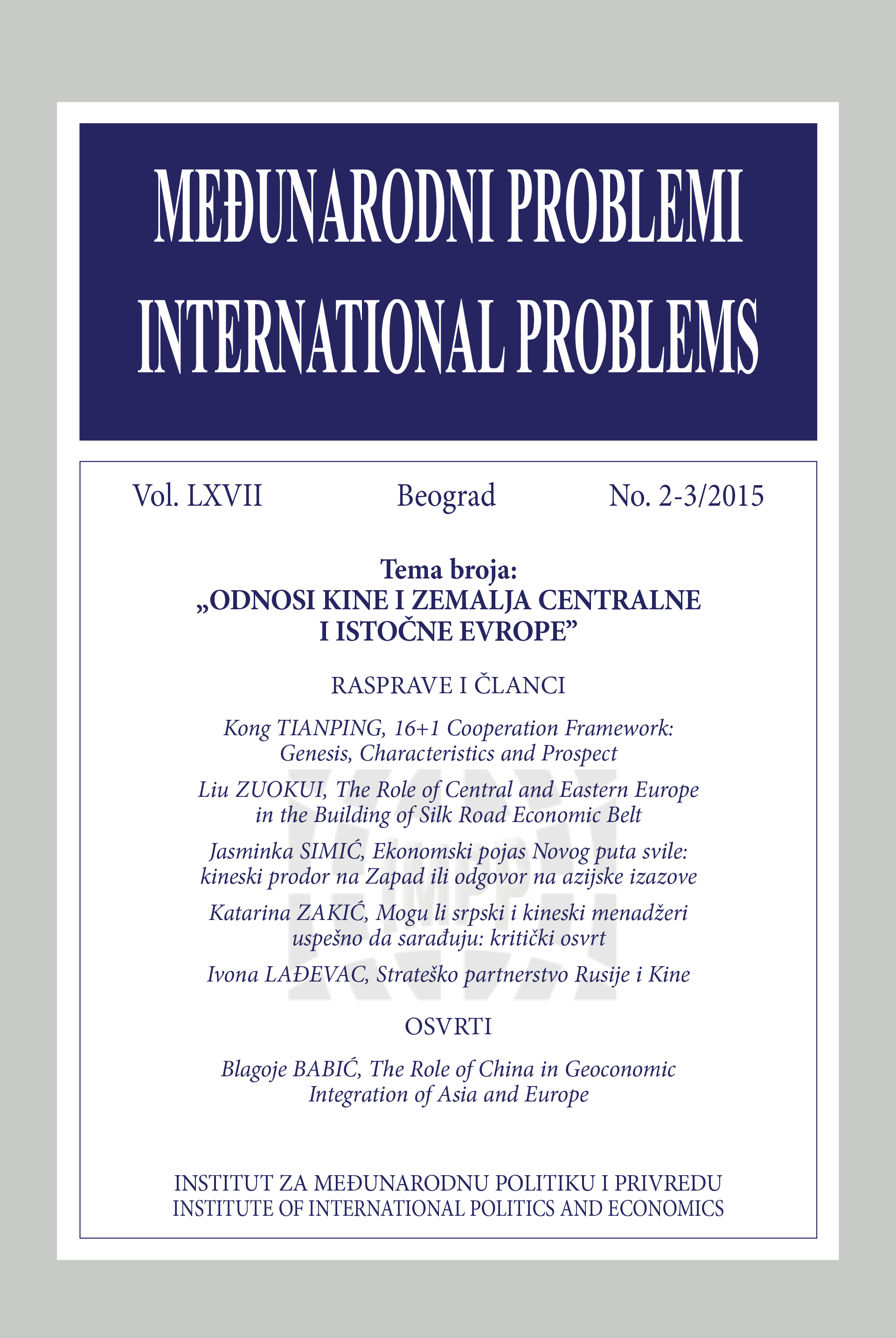Ekonomski pojas novog puta svile: Kineski prodor na zapad ili odgovor na Azijske izazove
The economic belt of the New silk road: Chinese breakthrough in the West or a response to Asian challenges
Author(s): Jasminka SimićSubject(s): Politics / Political Sciences
Published by: Институт за међународну политику и привреду
Keywords: New Silk Road; Transatlantic Trade and Investment Partnership (TTIP); “16+1” Policy; Serbia; Euroasian Economic Union; China; Xinjiang; Transpacific partnership
Summary/Abstract: The paper analyses how the Chinese project of establishing the Economic Belt of the New Silk Road challenges newly formed Eurasian Economic Union, with Russia as the leading force, as well as the North-American and Pacific trade network, dominated by the U.S. The author discusses how the overlapping responsibilities and influence of these regional economic groups may affect their complementarities and competitiveness on the world market, and how they may impact the future course of international relations. The Economic Belt is aimed at creating and strengthening economic, transport, human and cultural relations between China and Central Asian countries, but without Russia. The New Silk Road would stretch from the Pacific to the Baltic Sea, encompassing land and sea trading routes, and follows the route of the ancient Silk Road. When the New Silk Road project, linking three continents, is completed, it will bring new chance for development for China as well as for all other countries on the New Silk Road, including those in the Southeastern Europe. The author concludes that the Economic Belt of the New Silk Road might relax conflicts and quarrels between Western and Far East countries in regard to their aspirations to dominate in Euroasia.
Journal: Међународни проблеми
- Issue Year: LXVII/2015
- Issue No: 2-3
- Page Range: 196-216
- Page Count: 21
- Language: Serbian

